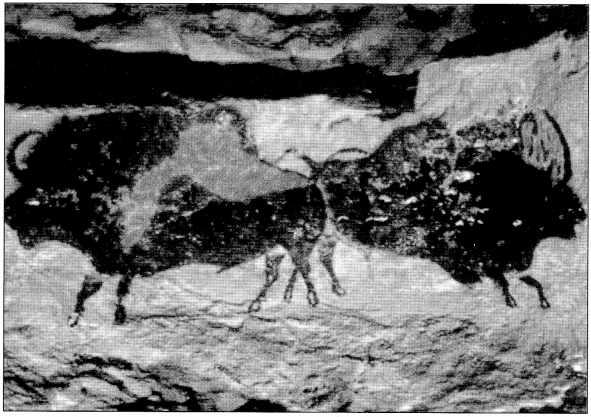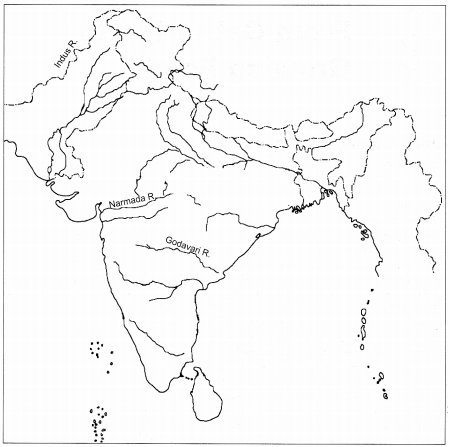If you’re looking for a way to enhance your Social Science, then look no further than the NCERT MCQ Questions for Class 6 History Chapter 2 On The Trial of the Earliest People with Answers Pdf free download. MCQ Questions for Class 6 Social Science with Answers is perfect for those who are in class 6 History and want to get ahead of everyone else by mastering their subject skills as soon as possible!
On The Trial of the Earliest People Class 6 MCQs Questions with Answers
Solving MCQ on On The Trial of the Earliest People Class 6 with Answers can be of great help to students as they will be aware of all the concepts. These Class 6 History Chapter 2 MCQ with Answers pave for a quick revision, thereby helping you learn more about this subject.
Question 1.
Why did hunter-gatherers move from one place to other place?
(a) In search of food
(b) In search of shelter
(c) In search of water
(d) All of the above
Answer
Answer: (d) All of the above
Question 2.
What were the purposes of stone tools?
(a) To make spear and arrows
(b) to chop roots and fruits
(c) To cut meat and bones
(d) All the above
Answer
Answer: (d) All the above
Question 3.
Where was ash found?
(a) Kurnool
(b) Bhimbetka
(c) Chennai
(d) Delhi
Answer
Answer: (a) Kurnool
Question 4.
What material was used by the earlier people?
(a) Stone
(b) Wood
(c) Bone
(d) All of the above
Answer
Answer: (d) All of the above
Question 5.
In which state eggs of Ostrich were found?
(a) Kurnool
(b) Maharashtra
(c) Delhi
(d) Chennai
Answer
Answer: (b) Maharashtra
Question 6.
Who gives us information about history?
(a) Doctors
(b) Engineers
(c) Psychologists
(d) Archaeologists
Answer
Answer: (d) Archaeologists
Question 7.
How did ancient people travel?
(a) By Buses
(b) By Trains
(c) By Ships
(d) On Foot
Answer
Answer: (d) On Foot
Question 8.
The early man lived in ______________ by sides of __________________
(a) Hut, Forest
(b) Building, Rivers
(c) Building , Forest
(d) Hut, River
Answer
Answer: (d) Hut, River
Question 9.
Some stone produce ________________ when struck with each other
(a) Smog
(b) Smoke
(c) Fire
(d) Dust
Answer
Answer: (c) Fire
Question 10.
The man had lived on this earth for several hundred years before he learned the art of writing’ this period is called
(a) Post-historic period
(b) Neo-historic period
(c) Historic period
(d) Pre-historic period
Answer
Answer: (d) Pre-historic period
Question 11.
In 9000 B.C began an intermediate stage in stone age culture which is called
(a) Mesolithic age
(b) Chalcolithic age
(c) Palaeolithic period
(d) Neolithic age
Answer
Answer: (a) Mesolithic age
Question 12.
Lithic means
(a) Age
(b) Old
(c) Fruit
(d) Stone
Answer
Answer: (d) Stone
Question 13.
The special feature of cave painting is the use of
(a) Chalk
(b) Colours
(c) Soil
(d) Brush
Answer
Answer: (b) Colours
Question 14.
How do the historians know that early man was aware of the usage of fire
(a) Through cave
(b) Through Manuscripts
(c) Trace the ashes
(d) Through Inscription
Answer
Answer: (c) Trace the ashes
Question 15.
The transitional phase between Palaeolithic and Neolithic age is known as
(a) Microlithic age
(b) Mesolithic age
(c) Macrolithic age
(d) Masolithic age
Answer
Answer: (b) Mesolithic age
Question 16.
Habitation are the site where
(a) People live
(b) People make stones
(c) People play
(d) People make paintings
Answer
Answer: (a) People live
Write true (T) or false (F)
1. Spears and arrows were used for hunting.
Answer
Answer: True
2. Places where stone was found and where people made tools are known as factory sites.
Answer
Answer: True
3. The word ‘Palaeolithic’ came from Latin word.
Answer
Answer: False
4. Ostriches were found in India during Mesolithic period.
Answer
Answer: False
5. Some rivers are perennial while others are seasonal.
Answer
Answer: True
Match the following
1.
| Column-I | Column-II |
| 1. Hunsgi | (a) habitation site |
| 2. Perennial | (b) old |
| 3. Palaeo | (c) Madhya Pradesh |
| 4. Lithos | (d) water throughout the year |
| 5. Bhimbetka | (e) stone |
Answer
Answer:
| Column-I | Column-II |
| 1. Hunsgi | (c) Madhya Pradesh |
| 2. Perennial | (d) water throughout the year |
| 3. Palaeo | (b) old |
| 4. Lithos | (e) stone |
| 5. Bhimbetka | (a) habitation site |
Fill in the blanks
1. The earliest period of the stone age was ……………………… .
Answer
Answer: palaeolithic
2. Stone age is also called ……………………… .
Answer
Answer: Pre-historic age
3. Sites of Bhimbetka are known as ……………………… sites.
Answer
Answer: habitation
4. Natural caves and rock shelters are found in the ……………………… and the ……………………… plateau.
Answer
Answer: Vindhyas, Deccan
5. Major climate change occurred ……………………… years ago.
Answer
Answer: 12,000
6. Ostriches were found in India during the ……………………… period.
Answer
Answer: palaeolithic
Name the following
1. Name two Palaeolithic sites.
2. Name two Neolithic sites.
Answer
Answer:
1. Hunsgi and Kurnool caves.
2. Hallur and Chirand
Picture Based Questions
1.

(a) In which country was this picture found?
(b) How many years old is this picture?
(c) The colors used in the picture are made up of ……………………… .
Answer
Answer:
(a) This picture was found in France.
(b) About 20,000-10,000 years old.
(c) minerals like ochre or iron ore and charcoal.
Map Skills
1.
Find out following on Indian Map
(i) Indus River (ii) Godavari (iii) Narmada
Answer
Answer:

Hope you found this information on NCERT MCQ Questions for Class 6 History Chapter 2 On The Trial of the Earliest People with Answers Pdf free download useful. We are always here to help, so if there is any specific query or question with CBSE Class 6 Social Science On The Trial of the Earliest People Class 6 MCQs Multiple Choice Questions with Answers or any other topic please let us know in the comments below.